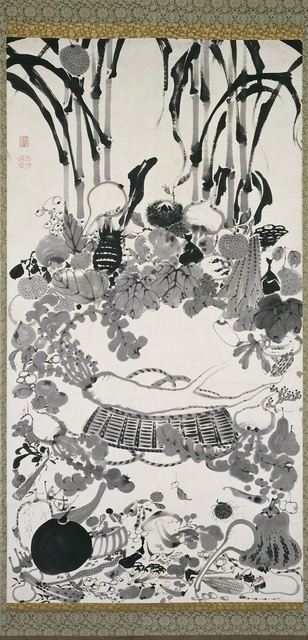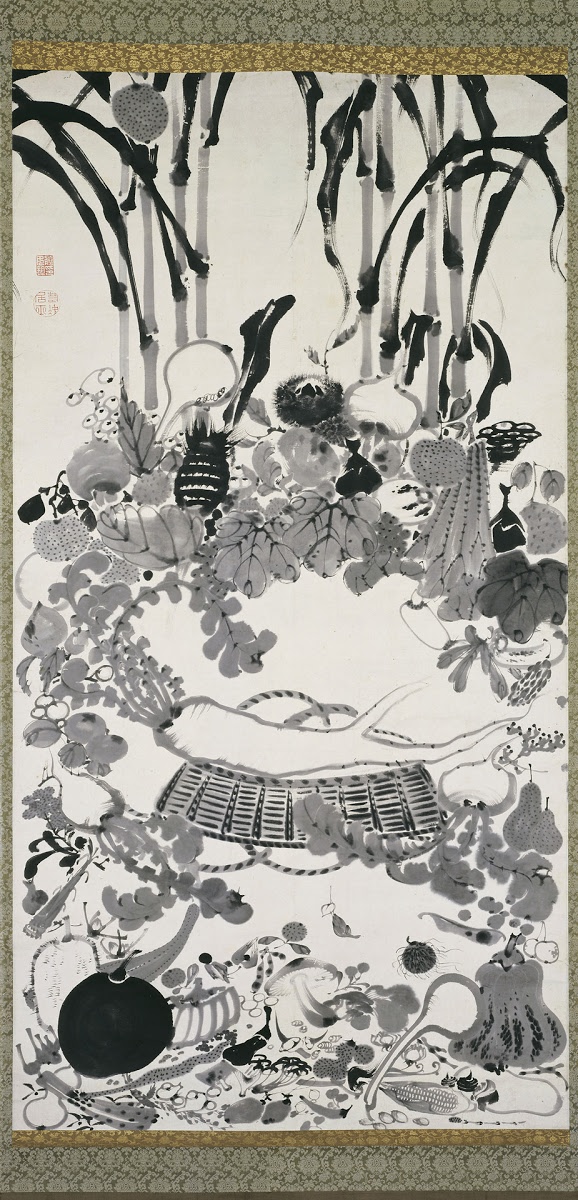Itō Jakūchu, The Vegetable Nehan

Full description
Jakūchu was born into a family of greengrocers in Kyoto. Despite being born into the relatively less well-regarded, if prosperous, merchant class, Jakūchu identified himself as an artist, and actively engaged with scholarly and artistic communities. Further, Jakuchu ties his art to his strong Buddhist faith. In The Vegetable Nehan, Jakuchu recontextualizes the Buddhist motif of Parinirvana paintings through his own experience as a greengrocer. The Parinirvana motif shows the death of the Buddha surrounded by notable figures from the Buddhist faith. In Jakuchu's interpretation, the Buddha figure is replaced with a radish, and the Bodhisattva around him take the form of yams, gourds, and other vegetables. In Edo Japan, Radishes acted as a symbol of dignity and some scholars argued that a radish could reach Nirvana. The placement of the Radish and surrounding vegetables is not only a reflection of Jakuchu's personal history but a carefully constructed object of faith.
Image Credited to the Kyoto National Museum
Comments
to view and add comments.
Annotations
No one has annotated a text with this resource yet.
- typeImage
- created on
- file formatjpg
- file size274 kB


